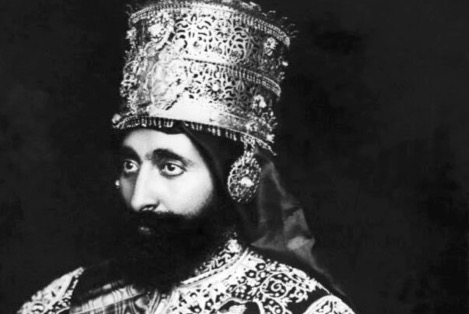This Week in History recalls memorable and decisive events and personalities of the past.
5th December 1934 – Abyssinia Crisis: Italian troops attack Wal Wal in Abyssinia, taking four days to capture the city.
By the 1920s Ethiopia was the only African country to have avoided annexation by European powers, after it had defeated an Italian invasion at the Battle of Adwa in 1896. However, Ethiopia’s geo-political position was tenuous. It was surrounded by Italian Eretria to the North and Italian Somalia to the east. It also bordered the French in Djibouti and the British in Kenya, Sudan and British Somaliland. Ethiopia did have an ally in Russia for a time, but in the 1920s this was no longer the case as the new Soviet government did not look as favourably on the monarchical Ethiopians as the Tsars once had.
The Italians still nursed a grudge against Ethiopia after their humiliating defeat and so were looking for opportunities to once again attempt to secure Italian dominance over Ethiopia. In 1928, the Italian dictator Benito Mussolini (who you can read about here: https://dailyfriend.co.za/2020/11/06/10718/) signed a “Treaty of Friendship and Arbitration” with the Ethiopian emperor Haile Selassie. The Italian goal was to increase Ethiopia’s economic reliance on Italy so that they could dominate Ethiopia without the need for an invasion, the Ethiopians hopped to secure their borders against a future Italian invasion.

Two years after the signing of the treaty, the Italians built a fort near the Wal Wal oasis town, which at the time was within the borderlands between the two empires in a region which was not clearly defined as belonging to either Italy or Ethiopia. As a result, the area became a disputed zone with both Italy and Ethiopia claiming the area.
Both governments continued to increase tensions over the issue over the next 4 years, and on the 22nd of November 1934, things came to a head when a group of 1000 Ethiopian troops marched to the Italian fort at Wal Wal and demanded the 60 man garrison to withdraw from the area. The Somali troops in Italian service refused to withdraw and sent word to the Italian army of what had happened.
On the 23rd of November, members of a British-Ethiopian survey group, who were there to help resolve the border dispute by demarcating the border arrived near Wal Wal and saw a large force of Italian troops massing for an attack on the Ethiopians, something the British protested.
Sometime beginning on the 5th of December, fighting broke out between the Italian-Somali troops and the Ethiopians, it is not known how the fight began, but after several days of the fighting 100 Ethiopians, and 50 Italian-Somalis lay dead with the Italians capturing the area with the help of tanks and aircraft.
Mussolini saw in the incident an opportunity to justify an invasion of Ethiopia and finally avenge the defeat of Adwa, and in so doing secure a greater empire for Italy in Africa.
Tensions continued to grow as Mussolini pushed for war, and the League of Nations attempted to negotiate a peace, to no avail. A commission of inquiry into the events of the Wal Wal incident exonerated both parties for blame, but it was too late. Italy invaded Ethiopia in October of 1935.
The Italians had some initial success, but were bogged down due to the bad infrastructure on the Ethiopia side. In December of 1935, the Ethiopians launched a counter offensive which had some success defeating the Italians ambushing them in mountain passes and using large boulders to block and immobilize the small Italian tanks, ultimately the Ethiopian troops were too poorly equipped due resist the Italians who with their superior arms, air support and artillery slowly drove the Ethiopians back.
The Italians were also able to defeat the Ethiopians through the heavy use of poison gas, which the poorly equipped Ethiopians had no defence against, lacking gas masks.
Whilst the Italians bombed the Ethiopians with gas, the Ethiopians used exploding bullets and routinely mutilated captured Italian troops, often with castration. Eventually in February of 1937, the Italian army successfully conquered Ethiopia. Ethiopia was absorbed into Italian East Africa, Haile Selassie was forced into exile and an Italian empire was declared.
Italy would remain in control of Ethiopia into the 2nd world war, when in 1940 a group of British, British-African, Indian, South African, French and Belgian troops would enter Ethiopia to assist the Ethiopian resistance, defeating the Italian army on the 27th of November 1941 and dissolving Italian East Africa.
Haile Selassie would remain emperor of Ethiopia until 1974, when a communist coup overthrew him.

